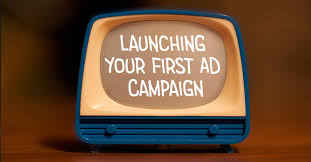Navigating The Social Media Landscape: A Comprehensive Overview Of Platforms And Best Practices

In today's digital landscape, social media platforms have become indispensable tools for individuals and businesses alike to connect, engage, and share content with audiences worldwide. With a multitude of platforms available, each offering unique features and tools, navigating the social media maze can be overwhelming. In this comprehensive guide, we'll explore the key features of seven popular social media platforms, Facebook, Instagram, LinkedIn, TikTok, YouTube, Pinterest, and Twitter, compare their strengths and weaknesses, delve into best practices for posting, and unravel the mysteries of platform algorithms.
1. Facebook:
Features and Tools:
1. Facebook offers a range of features, including personal profiles, pages for businesses and brands, groups for communities, and events for organizing gatherings.
2. Tools like Facebook Ads Manager allow for targeted advertising, while Insights provide analytics on page performance.
Strengths:
1. Vast user base and reach.
2. Diverse content formats, including text, images, videos, and live streams.
Weaknesses:
1. Organic reach has declined over the years, requiring businesses to invest in paid advertising for visibility.
2. Algorithm changes can impact content visibility.
Best Practices:
1. Post regularly with a mix of content types.
2. Use Facebook Groups to foster community engagement.
3. Utilize Facebook Ads to reach specific target audiences.
2. Instagram:
Features and Tools:
1. Instagram is known for its visual content, including photos, videos, Stories, Reels, and IGTV.
2. Features like Instagram Insights provide analytics on account performance.
Strengths:
1. Highly visual platform with engagement-driven features like Stories and Reels.
2. Ideal for showcasing products, services, and lifestyle content.
Weaknesses:
1. Limited clickable links in posts (except for Stories with over 10k followers).
2. Algorithm changes can affect content visibility.
Best Practices:
1. Post high-quality, visually appealing content.
2. Utilize Stories and Reels for increased engagement.
3. Use relevant hashtags to reach a wider audience.
3. LinkedIn:
Features and Tools:
1. LinkedIn is a professional networking platform focused on career development, networking, and industry insights.
2. Features include personal profiles, company pages, groups, and LinkedIn Ads for advertising.
Strengths:
1. Targeted audience of professionals and businesses.
2. Opportunity for thought leadership and networking.
Weaknesses:
1. Lower engagement compared to other platforms.
2. Limited organic reach for company pages.
Best Practices:
1. Share industry insights, thought leadership content, and professional updates.
2. Engage with connections through comments and messages.
3. Utilize LinkedIn Ads for targeted B2B marketing.
4. TikTok:
Features and Tools:
1. TikTok is a short-form video platform known for its viral challenges and trends.
2. Features include video creation tools, filters, effects, and a For You Page algorithm.
Strengths:
1. Highly engaging and entertaining platform.
2. Potential for rapid growth and virality.
Weaknesses:
1. Limited link-sharing capabilities.
2. Younger audience demographic may not align with all businesses.
Best Practices:
1. Embrace creativity and authenticity in content.
2. Participate in trending challenges and hashtags.
3. Post frequently to maintain visibility on the For You Page.
5. YouTube:
Features and Tools:
1. YouTube is the largest video-sharing platform, offering a wide range of content categories and formats.
2. Features include channel customization, video analytics, and monetization options.
Strengths:
1. High discoverability through search and recommendations.
2. Opportunity for long-form content and storytelling.
Weaknesses:
1. Requires consistent content creation and high-quality production.
2. Competition can be fierce in popular niches.
Best Practices:
1. Create engaging, informative, and high-quality video content.
2. Optimize video titles, descriptions, and tags for search.
3. Encourage audience engagement through likes, comments, and shares.
6. Pinterest:
Features and Tools:
1. Pinterest is a visual discovery platform focused on inspiration, ideas, and planning.
2. Features include Pins, Boards, visual search, and Pinterest Ads.
Strengths:
1. Ideal for driving traffic and sales for visually appealing products and services.
2. Longevity of Pins leads to evergreen content.
Weaknesses:
1. Limited organic reach compared to other platforms.
2. Requires consistent posting and optimization for visibility.
Best Practices:
1. Create eye-catching, informative Pins with clear descriptions.
2. Utilize keywords and hashtags for discoverability.
3. Engage with the Pinterest community through commenting, sharing, and collaboration.
7. Twitter:
Features and Tools:
1. Twitter is a microblogging platform focused on real-time updates, news, and conversations.
2. Features include Tweets, Retweets, hashtags, and Twitter Ads.
Strengths:
1. Highly conversational platform for engagement and interaction.
2. Opportunity for timely and relevant content.
Weaknesses:
1. Character limit can be restrictive for conveying detailed information.
2. Content can easily get lost in the fast-paced feed.
Best Practices:
1. Tweet regularly to maintain visibility in the feed.
2. Use hashtags to join relevant conversations and increase discoverability.
3. Engage with followers through replies, Retweets, and likes.
Understanding Platform Algorithms:
Each social media platform employs algorithms to determine which content is shown to users. While the specifics of each algorithm may vary, common factors include engagement (likes, comments, shares), relevance, recency, and user behavior. Understanding how algorithms work can help you optimize your content strategy for maximum visibility and engagement.
In conclusion, mastering social media platforms requires a combination of understanding their features and tools, implementing best practices for posting, and navigating platform algorithms. By leveraging the strengths of each platform and tailoring your content to meet the needs and preferences of your audience, you can effectively connect with users, build your brand, and achieve your social media goals.



Comments
Post a Comment